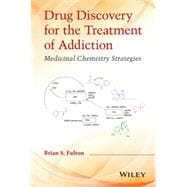With addiction a key target for drug discovery efforts, this book fills an important and timely need for medicinal chemists who need to understand complex neuroscience issues. The author illustrates medicinal chemistry's prominent role in treating addiction and covers specific drugs of abuse including narcotics, stimulants, depressants, nicotine, and marijuana.
• Interprets complex neuro- biological and pharmacological information, like the drug-reward system, for medicinal chemists
• Emphasizes neurotransmitters and neurochemical mechanisms of addictive drugs
• Pulls together information on the many potential drug targets for treating addiction
• Stresses unique medicinal chemistry problems when describing pharmacology testing methods and drug development








